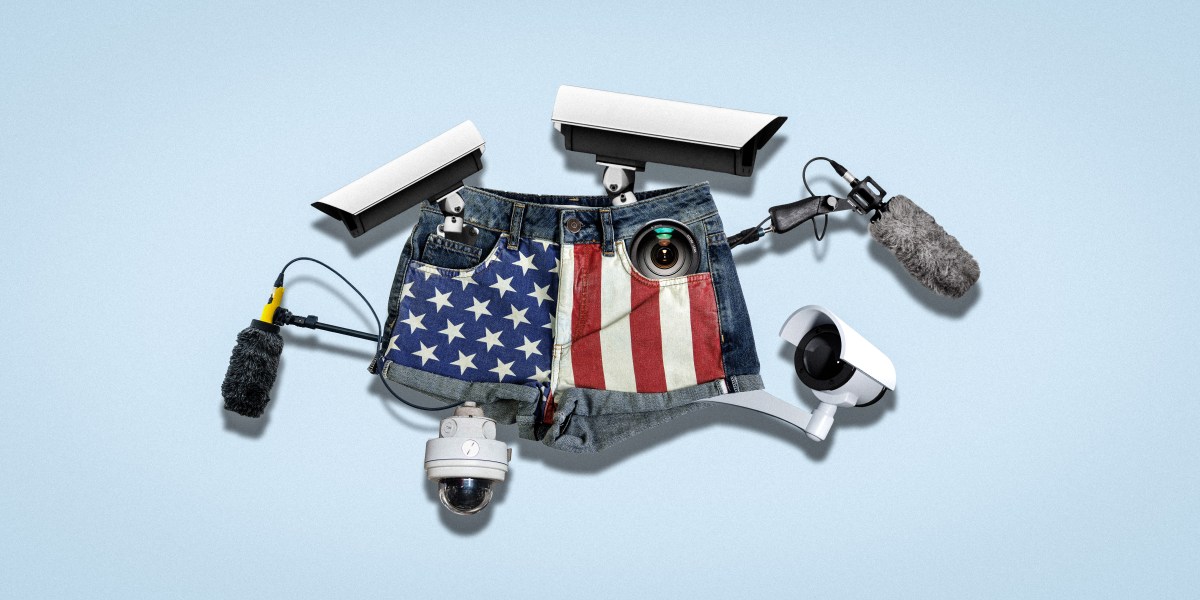cross-posted from: https://lemm.ee/post/6409289
The Office of the Director of National Intelligence is throwing $22 million in taxpayer money at developing clothing that records audio, video, and location data.
The future of wearable technology, beyond now-standard accessories like smartwatches and fitness tracking rings, is ePANTS, according to the intelligence community.
The federal government has shelled out at least $22 million in an effort to develop “smart” clothing that spies on the wearer and its surroundings. Similar to previous moonshot projects funded by military and intelligence agencies, the inspiration may have come from science fiction and superpowers, but the basic applications are on brand for the government: surveillance and data collection.
Billed as the “largest single investment to develop Active Smart Textiles,” the SMART ePANTS — Smart Electrically Powered and Networked Textile Systems — program aims to develop clothing capable of recording audio, video, and geolocation data, the Office of the Director of National Intelligence announced in an August 22 press release. Garments slated for production include shirts, pants, socks, and underwear, all of which are intended to be washable.
The project is being undertaken by the Intelligence Advanced Research Projects Activity, the intelligence community’s secretive counterpart to the military’s better-known Defense Advanced Research Projects Agency, or DARPA. IARPA’s website says it “invests federal funding into high-risk, high reward projects to address challenges facing the intelligence community.” Its tolerance for risk has led to both impressive achievements, like a Nobel Prize awarded to physicist David Wineland for his research on quantum computing funded by IARPA, as well as costly failures.
“A lot of the IARPA and DARPA programs are like throwing spaghetti against the refrigerator,” Annie Jacobsen, author of a book about DARPA, “The Pentagon’s Brain,” told The Intercept. “It may or may not stick.”
According to the Office of the Director of National Intelligence’s press release, “This eTextile technology could also assist personnel and first responders in dangerous, high-stress environments, such as crime scenes and arms control inspections without impeding their ability to swiftly and safely operate.”
IARPA contracts for the SMART ePANTS program have gone to five entities. As the Pentagon disclosed this month along with other contracts it routinely announces, IARPA has awarded $11.6 million and $10.6 million to defense contractors Nautilus Defense and Leidos, respectively. The Pentagon did not disclose the value of the contracts with the other three: Massachusetts Institute of Technology, SRI International, and Areté. “IARPA does not publicly disclose our funding numbers,” IARPA spokesperson Nicole de Haay told The Intercept.
Dawson Cagle, a former Booz Allen Hamilton associate, serves as the IARPA program manager leading SMART ePANTS. Cagle invoked his time serving as a United Nations weapons inspector in Iraq between 2002 and 2006 as important experience for his current role.
“As a former weapons inspector myself, I know how much hand-carried electronics can interfere with my situational awareness at inspection sites,” Cagle recently told Homeland Security Today. “In unknown environments, I’d rather have my hands free to grab ladders and handrails more firmly and keep from hitting my head than holding some device.”
SMART ePANTS is not the national security community’s first foray into high-tech wearables. In 2013, Adm. William McRaven, then-commander of U.S. Special Operations Command, presented the Tactical Assault Light Operator Suit. Called TALOS for short, the proposal sought to develop a powered exoskeleton “supersuit” similar to that worn by Matt Damon’s character in “Elysium,” a sci-fi action movie released that year. The proposal also drew comparisons to the suit worn by Iron Man, played by Robert Downey Jr., in a string of blockbuster films released in the run-up to TALOS’s formation.
“Science fiction has always played a role in DARPA,” Jacobsen said.
The TALOS project ended in 2019 without a demonstrable prototype, but not before racking up $80 million in costs.
As IARPA works to develop SMART ePANTS over the next three and a half years, Jacobsen stressed that the advent of smart wearables could usher in troubling new forms of government biometric surveillance.
“They’re now in a position of serious authority over you. In TSA, they can swab your hands for explosives,” Jacobsen said. “Now suppose SMART ePANTS detects a chemical on your skin — imagine where that can lead.” With consumer wearables already capable of monitoring your heartbeat, further breakthroughs could give rise to more invasive biometrics.
“IARPA programs are designed and executed in accordance with, and adhere to, strict civil liberties and privacy protection protocols. Further, IARPA performs civil liberties and privacy protection compliance reviews throughout our research efforts,” de Haay, the spokesperson, said.
There is already evidence that private industry outside of the national security community are interested in smart clothing. Meta, Facebook’s parent company, is looking to hire a researcher “with broad knowledge in smart textiles and garment construction, integration of electronics into soft and flexible systems, and who can work with a team of researchers working in haptics, sensing, tracking, and materials science.”
The spy world is no stranger to lavish investments in moonshot technology. The CIA’s venture capital arm, In-Q-Tel, recently invested in Colossal Biosciences, a wooly mammoth resurrection startup, as The Intercept reported last year.
If SMART ePANTS succeeds, it’s likely to become a tool in IARPA’s arsenal to “create the vast intelligence, surveillance, and reconnaissance systems of the future,” said Jacobsen. “They want to know more about you than you.”
I ain’t reading all of that. But yes, underwear as a listening device sounds like a proper brain fart. Wonder how’d they handle actual farts though…
If you’d read it all you’d suspect it would be able to tell you when it wasn’t just a fart, with a detailed chemical breakdown.
Could be useful as evidence if you are raped. If all the data is uploaded then destroying the underwear won’t even save the rapist.
Are we sure this isn’t an April fools press release that dropped early?
Depends. Do people discussing secrets often change underwear or go commando before doing so? If not, then it’s something that can be exploited.
Agent 86 would love them

Looks like back then they had to make do with Clever Cloggs
Yes, he would definitely Get them.
Coming to a uniform code near you soon
Well, if they ever come out with something like that, I’d be a little more safe since I almost never wear anything on underneath my pants, if you’ll pardon my crude ways.
The Stasi are alive and in overdrive!






